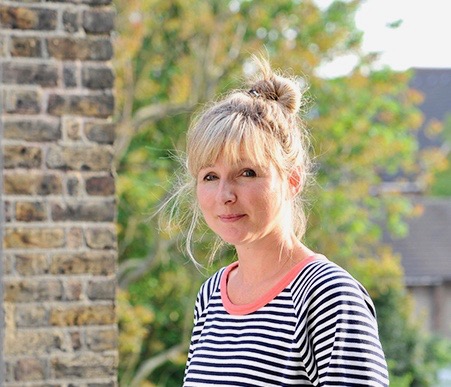7 of the fastest growing flowers to plant in spring for early summer blooms
Sow these seeds now and be greeted with early summer color and repeat blooms in your yard


Wondering what to plant in your yard for early summer color? Choose the fastest growing flowers to plant in spring and you'll have a palette of pretty hues by June.
Now is a good time to sow seeds, especially if you'd like some early summer blooms. The best fast-growing plants can flower in six to eight weeks, bringing new color, texture and interest to your containers, beds and borders as the new season begins.
Discover the flower favorites that professional gardeners and horticultural experts love to plant for a speedy and spectacular summer show.
7 of the fastest growing flowers to plant in spring
Some of these plants can be stratified and started indoors during spring and others can just be planted straight into the ground, after the last frost has passed.
1. Baby Blue Eyes (Nemophila menziesii)
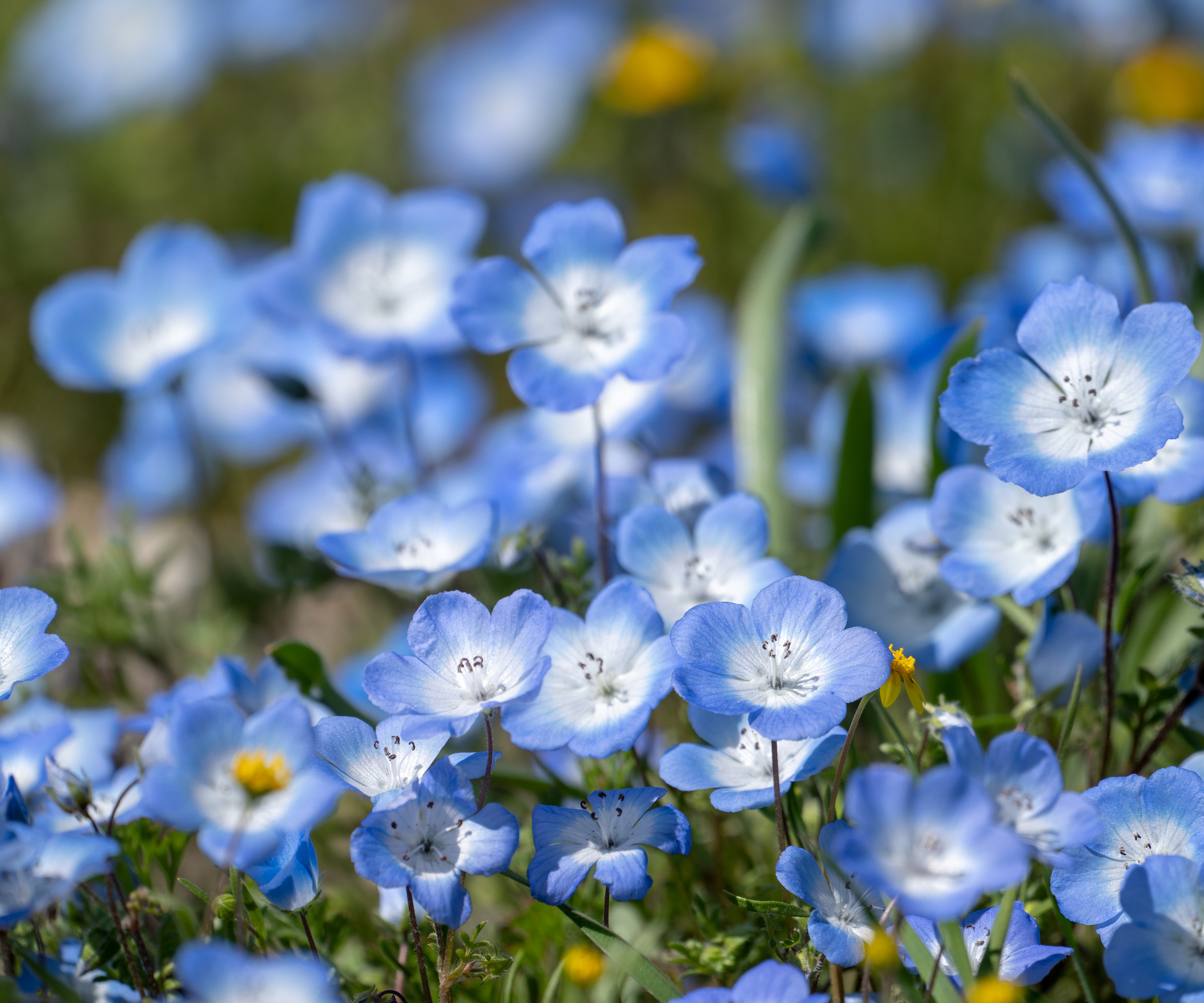
If cottage garden ideas are your thing, baby blue eyes plants will fit right into your spring and summer flower plans – and they are suitable for beds and borders or pots and patios. Native to the high Sierras, this spreading annual likes full sun to partial shade and will grow well in moist but well drained soil.
'This fast-growing flower is not just tolerant of cool, spring weather, it prefers it,' says Matt Mattus, Senior Director of Horticulture, American Horticultural Society. 'A western US native, Nemophila menziesii is quick to bloom from seed, and it’s one of those rare flowers that is indeed sky blue.
'Sow thinly and transplant while still very young, either indoors under lights or directly outdoors, and thin plants to about 4” apart. Like pansies, Nemophila can withstand light freezes and blooms profusely in containers or in a bed until mid-June when the warmer summer heat arrives.'
Design expertise in your inbox – from inspiring decorating ideas and beautiful celebrity homes to practical gardening advice and shopping round-ups.
These baby blue eyes seeds from True Leaf Market take 50-60 days to reach maturity and will soon fill your yard with their soft blue hue.
Suitable for USDA hardiness zones: 2-11

Matt Mattus has been involved with horticulture since he was a kid, working in his parent’s garden. By age 12 he was entering the local horticultural society displaying rare plants, cut true lilies, potted trained herbs and exotic vegetables. After a creative career in design, several books on gardening, and active membership of many plant societies, today Matt sits as the Senior Director of Horticulture for the American Horticultural Society (AHS) in Washington, DC.
2. Shirley Poppies (Papaver rhoeas)
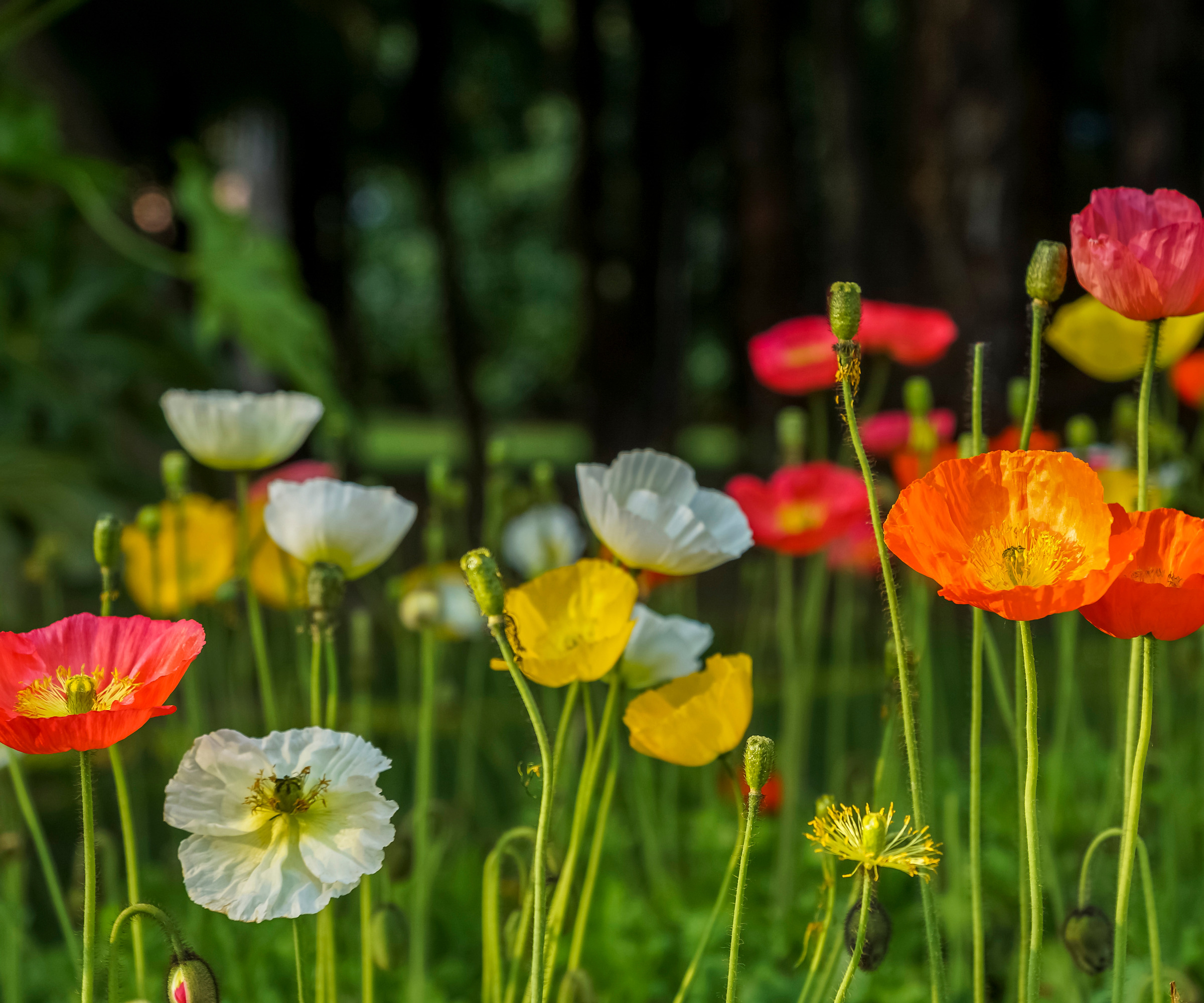
Many of us think of classic red poppies when we think of fast-growing flowering annuals, but there are other colorful types too. One of Matt's favorites is the Shirley poppy for its wide-ranging color palette, frost tolerance and speedy growth habit. Plant these seeds now and you'll have blooms by mid-summer.
'If you love poppies, few can rival the colors and texture of Shirley Poppies,' says Matt. 'The color palette ranges from coral, pink, white and lavender all the way down to smokey grey. With at least a half dozen selections, try ‘Amazing Grey’ with its sultry, lavender-grey tissue paper thin blooms or ‘Supreme’ with bright pinks, corals, and salmon blossoms that are doubles.
'While all annual poppies resent root disturbance, with care you can start them indoors and thin out the seedlings into individual pots, setting them into the garden in late April or May. Sown directly outdoors, the seed can withstand freezes but, contrary to popular belief, doesn’t need to be sown on snow or exposed to cold temperatures.
'All poppies germinate at 70°F so sow freely until early May. Thin plants leaving one every 6” in full sun, and water well. Blooms will appear quickly, but plants will stop once the high heat and humidity of summer arrives.'
Taking a little longer than some of the other fast-growing flowers here, these Shirley poppy double mixed seeds from True Leaf Market will bloom in under three months but their pretty hombre petals are worth the extra wait.
Suitable for USDA hardiness zones: 3-9
3. Desert Bluebells (Phacelia campanularia)
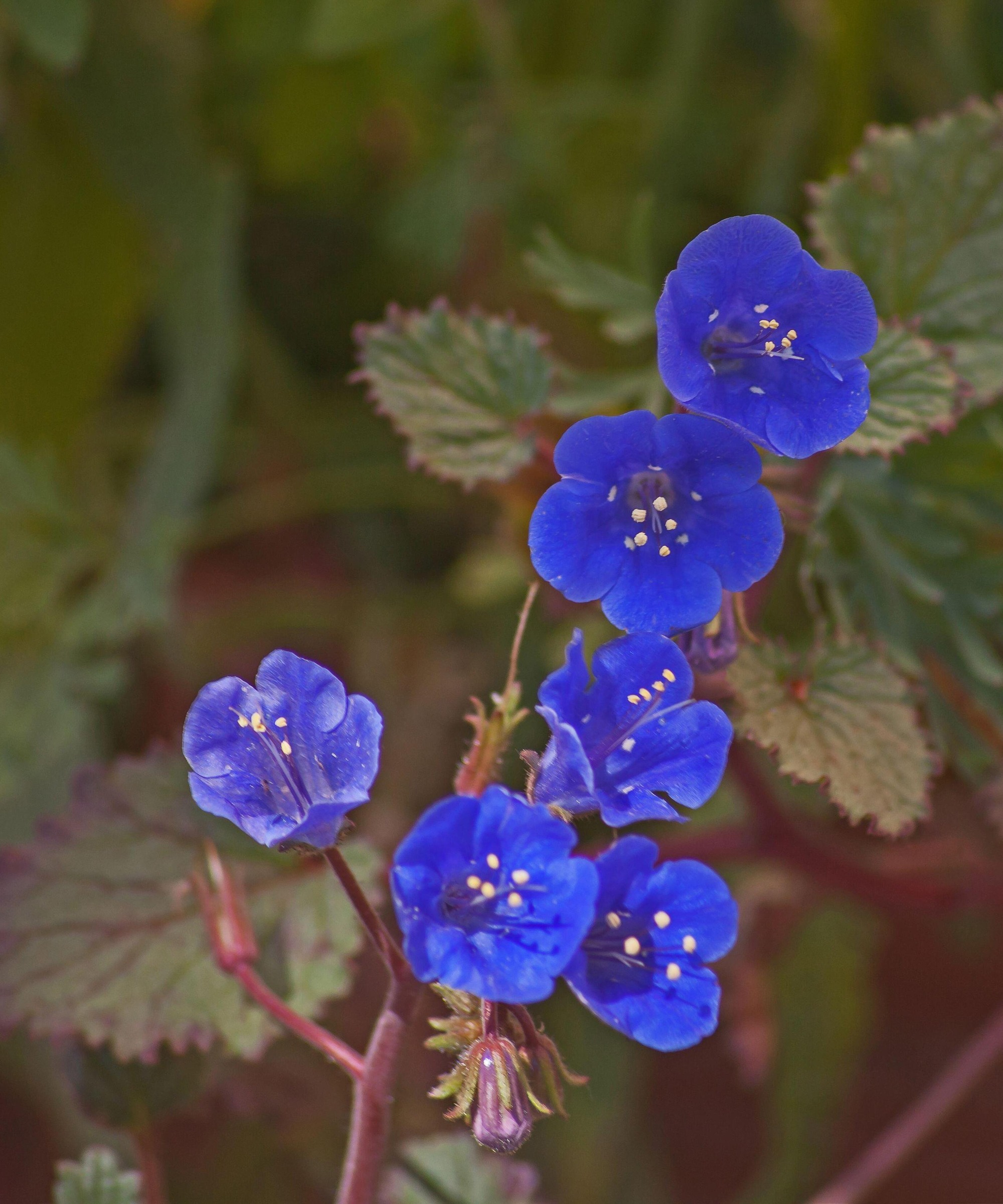
If it's fast intense early summer color that you're looking for, desert bluebells fit the bill. Native to California, this plant likes full sun and well drained soil and can flower within six to eight weeks from seed.
Phacelia campanularia is low maintenance and drought tolerant, although it will need some water if it hasn't rained in a while. It's also a good option if you're also considering plants for pollinators.
'Another true blue west coast native, Phacelia campanularia is a quick grower that insists on cool weather in spring and early summer,' says Matt. 'While the intense blue color is extraordinary, this is one annual that you are unlikely to find at a garden center, as it must be sown from seed.
'Sow as soon as the ground can be worked, or start in a seed flat in April and carefully transplant young plants into a spot outdoors. It's effective in rock gardens, containers and planted in drifts in the border, although it’s another plant that prefers the cool, spring weather and not the high heat of summer.
'Full sun with good moisture is key, and they are terrific sown along with California Poppies as this is a companion plant for them In the wild.'
Suitable for USDA hardiness zones: 2-10
4. Baby Snapdragons (Linaria maroccana)

Baby snapdragons are a great option for gardeners looking to create fast, early-season color. Their long bloom time, compact growth habit, and charming palette make them a go-to for early garden interest, especially in areas where spring color is in short supply.
Despite their dainty appearance, baby snapdragons are tough little plants - deer resistant and relatively drought tolerant once established.
'Baby snapdragons (Linaria maroccana), also known as toadflax, are one of the fastest-growing spring flowers, prized for their vibrant, jewel-toned blooms and delicate, upright form,' says Tabar Gifford, master gardener and representative, American Meadows.
'These easy-to-grow annuals germinate quickly - often in just 10 to 14 days - and begin blooming within 6 to 8 weeks of planting. As annuals, they are well-suited to most growing zones, making them a flexible option for gardens across nearly all US climates. These compact plants reach a mature height of just 10–15 inches, so they work well for mass plantings, low borders, or containers.
'Baby snapdragons bloom from spring into early summer, attracting butterflies and hummingbirds with their bi-colored flowers in shades of pink, red, yellow, and purple. While they appreciate full sun, they also tolerate part shade, especially in warmer regions, and they thrive in dry to average soil moisture.
'They're a great low-maintenance choice for beginner gardeners, and their ability to naturalize means they may self-seed and return in future seasons. Whether you're creating a meadow, a pollinator strip, or a cheerful container display, this fast-growing favorite adds a delightful pop of color with very little fuss.'
These heirloom Linaria Snapdragon Seeds from True Leaf Market take 65 days to reach maturity, so they will be in full bloom by June.
Suitable for USDA hardiness zones: 2-11

Tabar Gifford is a Master Gardener, and dedicated “plant geek”. With a lifelong love for gardening and nature, and a background in environmental studies and sustainable community development, she combines horticultural expertise with a commitment to education. Striving to empower individuals in achieving their gardening aspirations, Tabar embodies a genuine passion for sharing her knowledge. She gardens in zone 4 in Vermont.
5. Firewheels (Gaillardia pulchella)
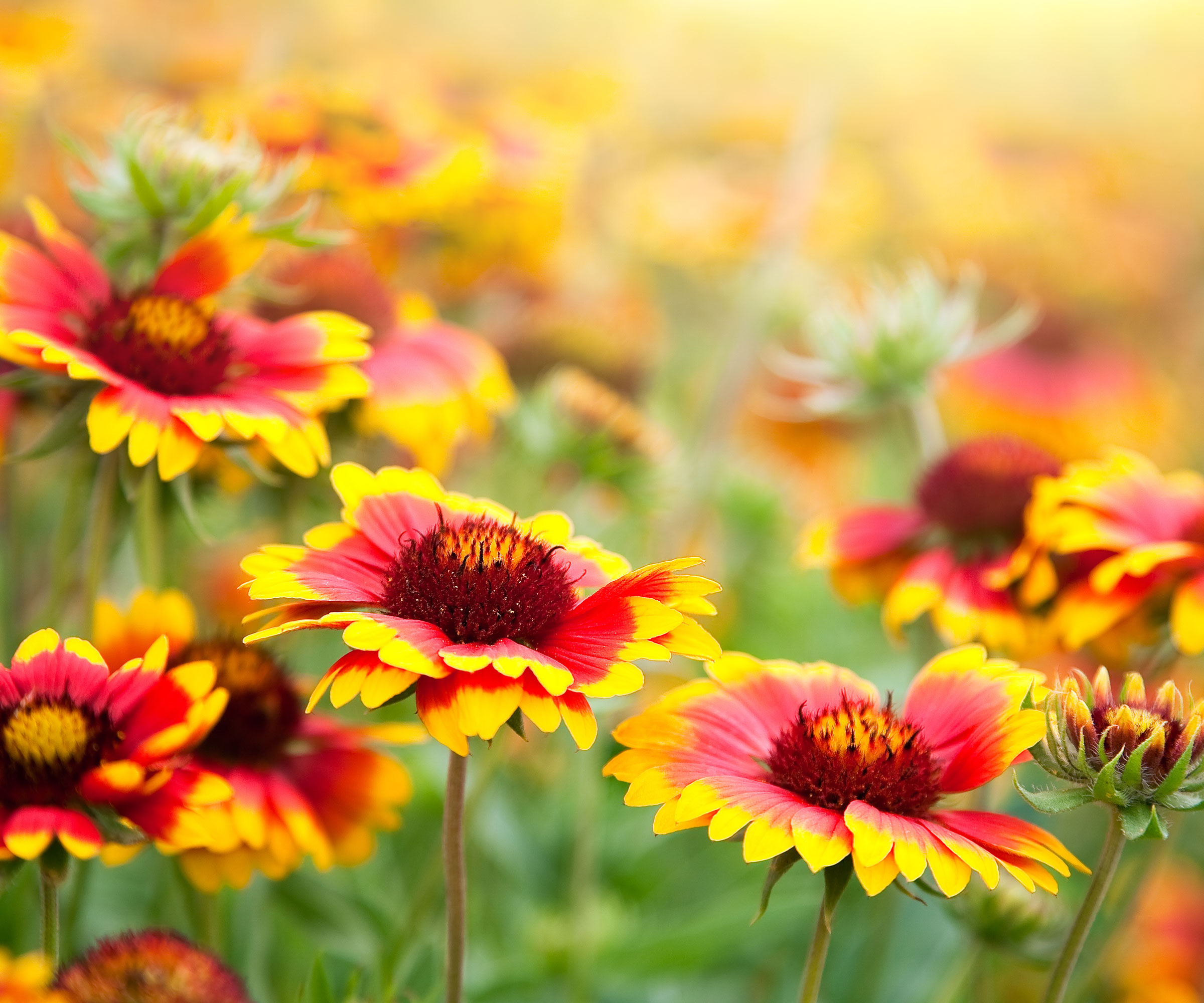
Native to the dry prairies of North America and naturalized across most of the US, Gaillardia promises fast late spring and early summer blooms.
It's also a wonderful plant for pollinators, low-maintenance and deer-resistant, and while Gaillardia is typically grown as an annual, it often reseeds itself, returning for an encore performance in subsequent seasons. Deadheading spent blooms can encourage even more flowering through late summer.
'Gaillardia (Gaillardia pulchella), commonly known as firewheel or Indian blanket, is one of the fastest-growing spring flowers and a brilliant choice for gardeners looking to add bold, lasting color with minimal effort,' says Tabar.
'This resilient annual bursts into bloom just 6–8 weeks after sowing. The seeds germinate quickly—typically within 7–14 days in warm soil—and plants can grow 12–24 inches tall, making them an excellent choice for the front of a border, container, or meadow garden.
'Gaillardia grows well in zones 2–10, and thrives in full sun and dry to average soils, where it delivers nonstop summer blooms in striking red, orange, and yellow tones. Firewheel’s daisy-like flowers are not only showstoppers - they’re also magnets for pollinators,' continues Tabar. 'Bees, butterflies, and birds are drawn to its nectar-rich blooms, and its seed heads offer a late-season food source for finches and other seed-loving birds. This makes Gaillardia a valuable addition to wildlife-friendly gardens.
'Because of its adaptability and drought tolerance, Gaillardia is ideal for low-water gardens, pollinator meadows, and any sunny spot that needs a fast, fiery pick-me-up.
'It pairs beautifully with other tough native wildflowers like coreopsis, black-eyed Susan, and blanket flower relatives for a full-season show. Whether planted by seed or started as transplants, firewheel is one of the easiest and fastest ways to paint your spring and summer garden in vibrant color.'
Suitable USDA hardiness zones: 2-10
6. Rocky Mountain bee plant (Cleome serrulata)
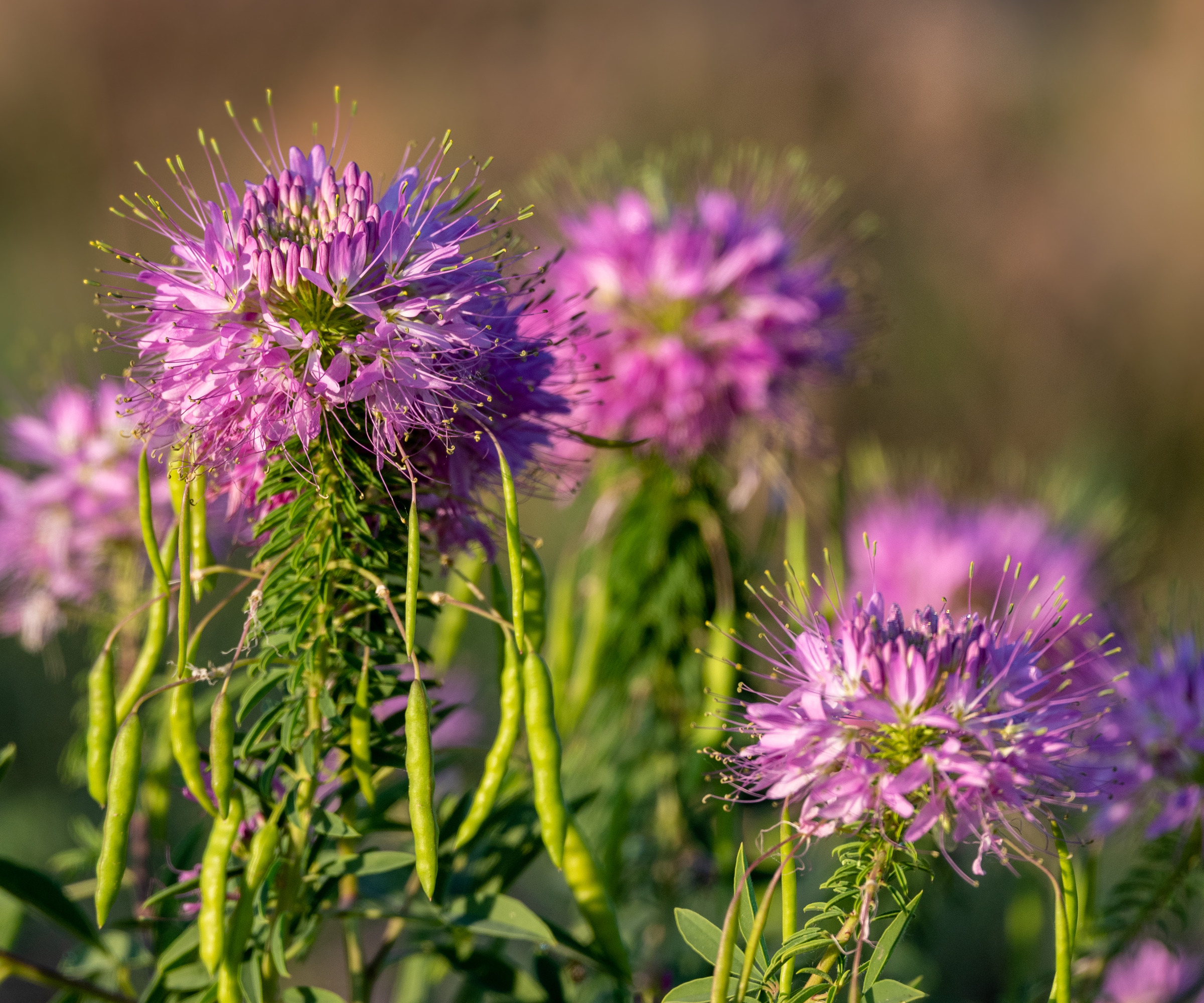
This fast-growing annual puts out pink nectar-filled blooms from late spring to fall that will attract butterflies and hummingbirds. As well as filling your yard quickly with color, Rocky Mountain bee plant is another wonderful plant for pollinators.
It takes two to three months to go from seed to flower and can be sown directly outdoors in spring (once seed stratification has taken place) if you missed sowing them in the fall. It likes full sun to light shade and well-drained soil and can survive a dry spell.
'Two flower species that consistently get raves from people and pollinators alike are Rocky Mountain bee plant (Cleome serrulata) and Lewis’ flax (Linum lewisii),' says Amy Yarger, Senior Director of Horticulture, Butterfly Pavilion.
'Native of the western plains, Rocky Mountain bee plant is one of the few truly xeric annuals available. In one season, it will grow from a tiny sprout to over four feet tall covered with rounded clusters of delicate pink and white flowers. Bees and butterflies flock to this showy plant for nectar, and the checkered white butterfly (Pontia protodice) uses this plant species as a larval host plant. This is the plant that keeps on giving – in late summer, collect the seeds for next year’s display.
'It’s best to reproduce natural cycles with this seed, so plant in the fall if you can,' continues Amy. 'If you do want to plant in the spring, mix seeds with sand and store in the refrigerator for 30 days. The seeds need light to germinate, so scatter and then lightly rake in. If conditions are dry, provide supplemental water until germinated, but usually, seasonal moisture is enough for seeds to sprout.
'Rocky Mountain bee plant likes sunny areas with good drainage. It looks great in meadow plantings, tall borders, and even cottage gardens – anywhere that allows a little wildness. It's low maintenance and doesn’t require any pruning and is not preferred by deer and rabbits.
'If needed, you can thin seedlings to make space for the mature plant. Rainfall is enough for this plant, but supplemental water will be a good idea during drought. Although, too much water will cause the plant to be top-heavy. It blooms throughout the summer if planted in early spring with cold treatment (or ideally, the previous fall). After blooming, collect seed pods to plant more.'
For a more colorful display, these Cleome Queen mixed color seeds from Burpee can be sown directly outdoors from end-April to mid-May, after the last frost (depending on your zone).
Suitable USDA hardiness zones: 3-8

Amy Yarger is the senior director of horticulture at Butterly Pavilion, Colorado. She currently leads Butterfly Pavilion’s local pollinator habitat initiatives, which restores habitat in urban and suburban green spaces in Westminster and Broomfield. Amy has also installed pollinator habitat gardens throughout the community.
7. Lewis’ flax (Linum lewisii)
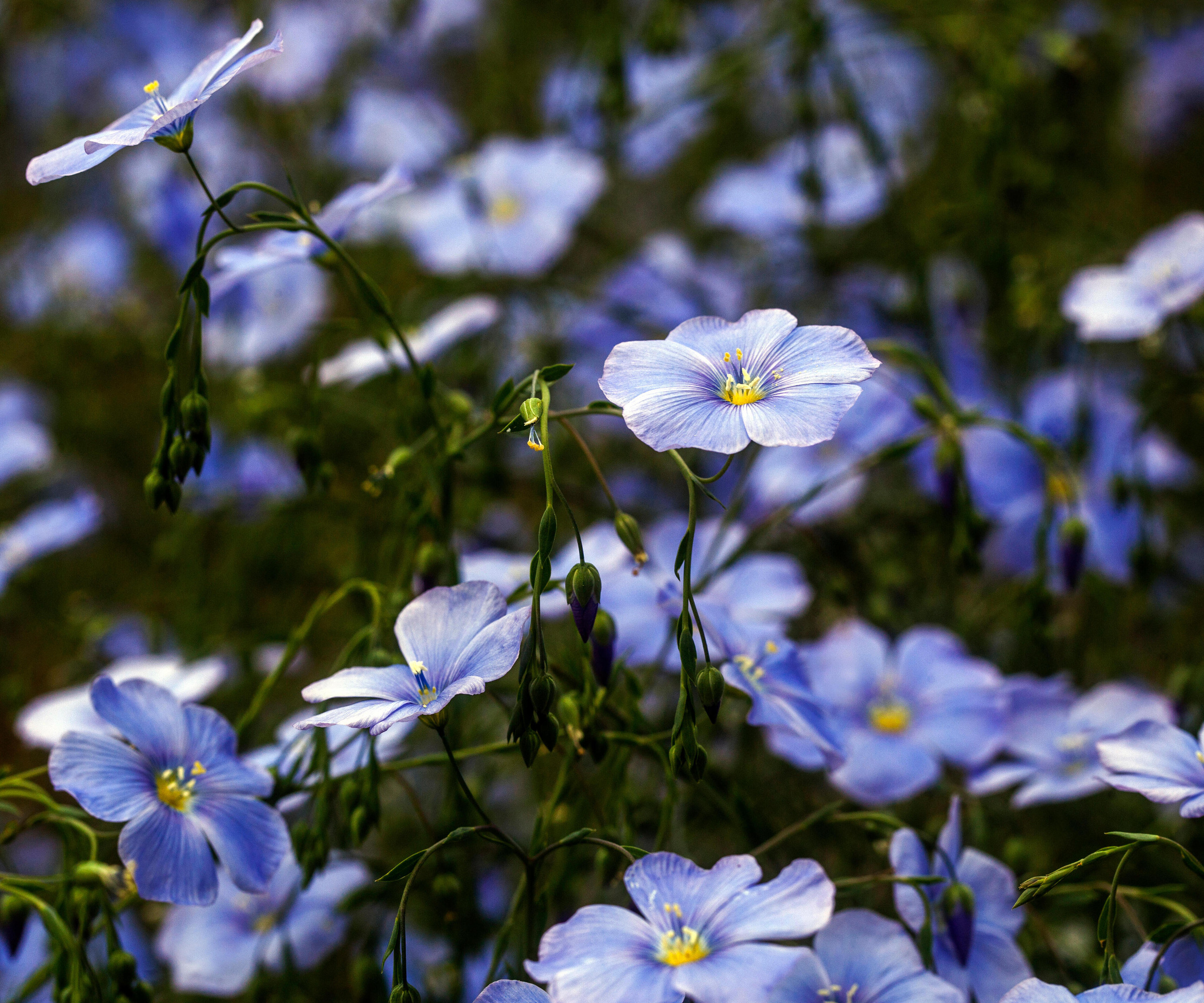
This North American native with its delicate stems and five-petaled blue flowers is a familiar sight in prairie-planting, offering a natural and informal style that is so popular right now. It'll take two to three weeks to germinate and will bloom in a little over two months, so it's a winner if you want a prompt arrival with romantic charm.
'For an early spring pop of sky-blue color, Lewis’ flax is an easy wildflower to start from seed,' says Amy. 'If planted in the fall or early spring, you’ll see blooms by May. Lightly rake in.' If your area is suffering drought conditions, provide supplemental moisture to newly seeded areas.
'Lewis’ flax is an adaptable plant when it comes to soil, but prefers sunny areas with good drainage. It’s a great addition to perennial gardens and wilder prairie plantings alike. It is another low water plant, although supplemental water may be necessary for germination.
'It is not only a key forage plant for early season bees, but fritillary butterflies use this plant as one of their larval hosts. Lewis’ flax is a short-lived perennial, but by collecting seed each summer, you can increase the amount you have in your landscape. Once your Lewis’ flax finishes blooming in the early summer, cut back browned stems and collect seed for future plantings.'
Suitable for hardiness zones: 3-9
Spring is a great time to sow many flowers, particularly annuals. Some of the seeds of the plants mentioned can be stratified to mimic the cold and started indoors, others can be sown straight into the ground in the spring, depending on your USDA hardiness zone.
Even within the specific zones, there are micro-climates, so check what is best for planting flower seeds according to the particular species and the climate and weather conditions in your region. Follow this guidance and you will be richly rewarded with speedy summer color in your yard.
Jacky Parker is a freelance lifestyle journalist and writer, producing a wide range of features for magazines and websites. She has written for Homes & Gardens and its sister titles, Livingetc and Country Homes & Interiors for more than 15 years, both as a freelance contributor and staff member, regularly reporting on the latest interiors, gardens and lifestyle inspiration, speaking to experts in their respective fields and discovering the newest tips.
